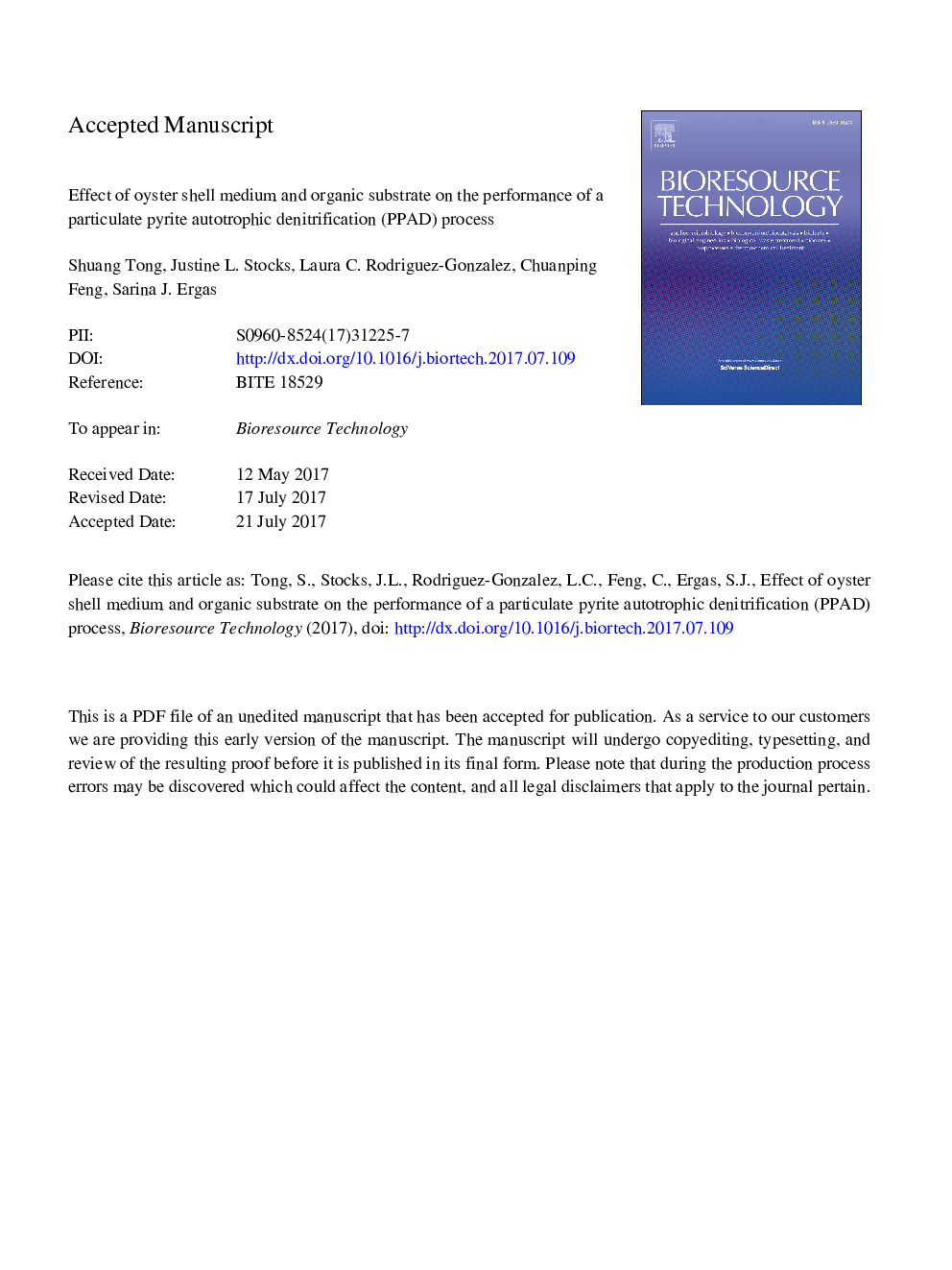| Article ID | Journal | Published Year | Pages | File Type |
|---|---|---|---|---|
| 4996527 | Bioresource Technology | 2017 | 36 Pages |
Abstract
The use of pyrite as an electron donor for biological denitrification has the potential to reduce alkalinity consumption and sulfate by-product production compared with sulfur oxidizing denitrification. This research investigated the effects of oyster shell and organic substrate addition on the performance of a particulate pyrite autotrophic denitrification (PPAD) process. Side-by-side bench-scale studies were carried out in upflow packed bed bioreactors with pyrite and sand, with and without oyster shells as an alkalinity source. Organic carbon addition (10% by volume wastewater) was found to improve PPAD denitrification performance, possibly by promoting mixotrophic metabolism. After organic carbon addition and operation at a six-hour empty bed contact time, total inorganic nitrogen (TIN) removal reached 90% in the column with oyster shells compared with 70% without. SEM images and biofilm protein measurements indicated that oyster shells enhanced biofilm growth. The results indicate that PPAD is a promising technology for treatment of nitrified wastewater.
Keywords
Related Topics
Physical Sciences and Engineering
Chemical Engineering
Process Chemistry and Technology
Authors
Shuang Tong, Justine L. Stocks, Laura C. Rodriguez-Gonzalez, Chuanping Feng, Sarina J. Ergas,
